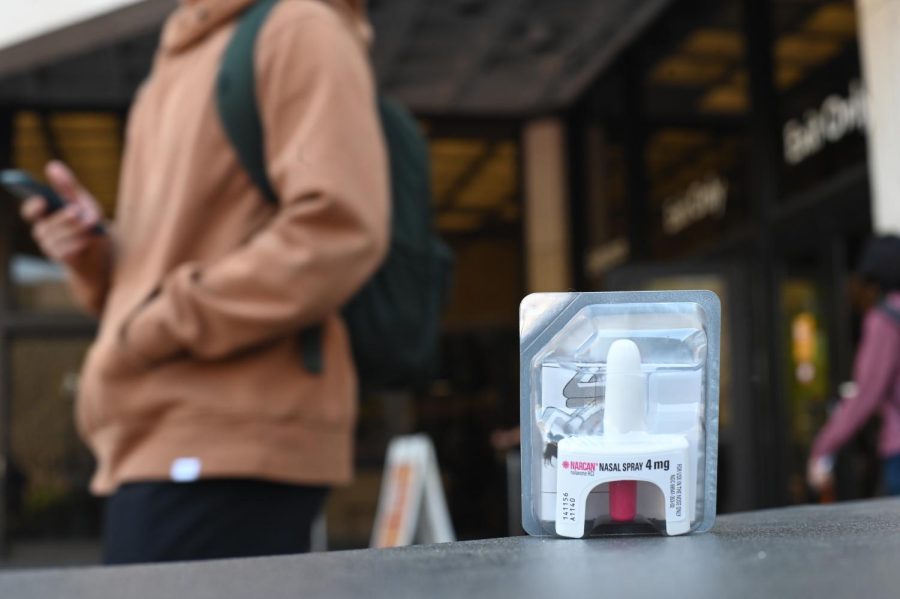Travis County, nonprofits provide naloxone at ACL to prevent opioid overdoses
The Perry-Castañeda Library security desk is now a distribution center and an emergency access point for naloxone spray for students, faculty and staff. The nasal spray, known as Narcan, is used to reverse the effects of an opioid overdose.
October 20, 2022
Travis County and other organizations provided naloxone for Austin City Limits staff to have on hand to help prevent opioid overdoses at the music festival.
Naloxone, also known by its brand name Narcan, reverses the effects of opioid overdoses, which are the leading cause of accidental death in Travis County, County Judge Andy Brown said.
The county provided 60 doses of naloxone to festival bartenders, Brown said. In addition, he said MusiCares, a nonprofit that offers health and welfare services to the music community, provided about 200 doses to non-first responder employees, and EMS and medical teams had their own naloxone supply.
“What we’re trying to do with the county (at) every large festival … (is) to get everybody to have quick access to Narcan because it can save lives,” Brown said.
Travis County EMS did not respond to any suspected opioid overdose calls at the festival, but did administer naloxone to a patient in cardiac arrest. However, this patient did not appear to be suffering from an opioid overdose, said Capt. Christa Stedman, Austin-Travis County EMS deputy public information officer.
Brown said the county gave doses to bartenders who could use the leftover doses at local bars.
“Most of the bartenders (who) work at ACL also are bartenders in the community,” Brown said. “We can do a training for them while they’re at ACL. Then, if they don’t use the Narcan, … they now can bring it back to their daily lives.”
Longhorn EMS, a Student Government agency, worked with Ascension Seton Medical Center to provide medical services at ACL. They had access to naloxone through the medical center, said Longhorn EMS captain Arvind Subramanian. Subramanian said 86 students volunteered with Longhorn EMS at ACL, of which 42 were EMT certified.
Longhorn EMS responder Hersh Trivedi said he worked five of the six festival days and was part of a team that helped a patient with an overdose.
“The main thing that helped in that scenario was the administration of Narcan,” neuroscience junior Trivedi said. “It’s really effective if it’s given early enough, and fortunately, we were all prepared for that.”
Although they ended up not dealing with many cases, Longhorn EMS chief Angelica Montes said their agency prepared for potential overdoses.
“One of our objectives was preparing for any type of overdose emergency,” nutrition senior Montes said. “We had an internal training dedicated just to drug overdoses and how to respond in those emergencies.”
Ayesha Middya, a volunteer at ACL’s second weekend, said she did not know that staff members had naloxone on hand. She said increased transparency about drug use and resources to combat overdoses would help reduce stigma.
“A big part of harm reduction in general is accepting the fact that people are going to use drugs,” public health junior Middya said.
Potential overdose symptoms to look for are slow breathing, unresponsiveness and smaller pupils, Montes said.
Trivedi said everyone should carry naloxone and be comfortable administering it in cases of potential overdoses. Narcan is available for free at the PCL and in some residence halls.
“I carry around the Narcan in my backpack at all times,” Trivedi said. “Even if you have no training whatsoever, if you suspect in an opioid overdose event, … anyone is able to give Narcan.”



